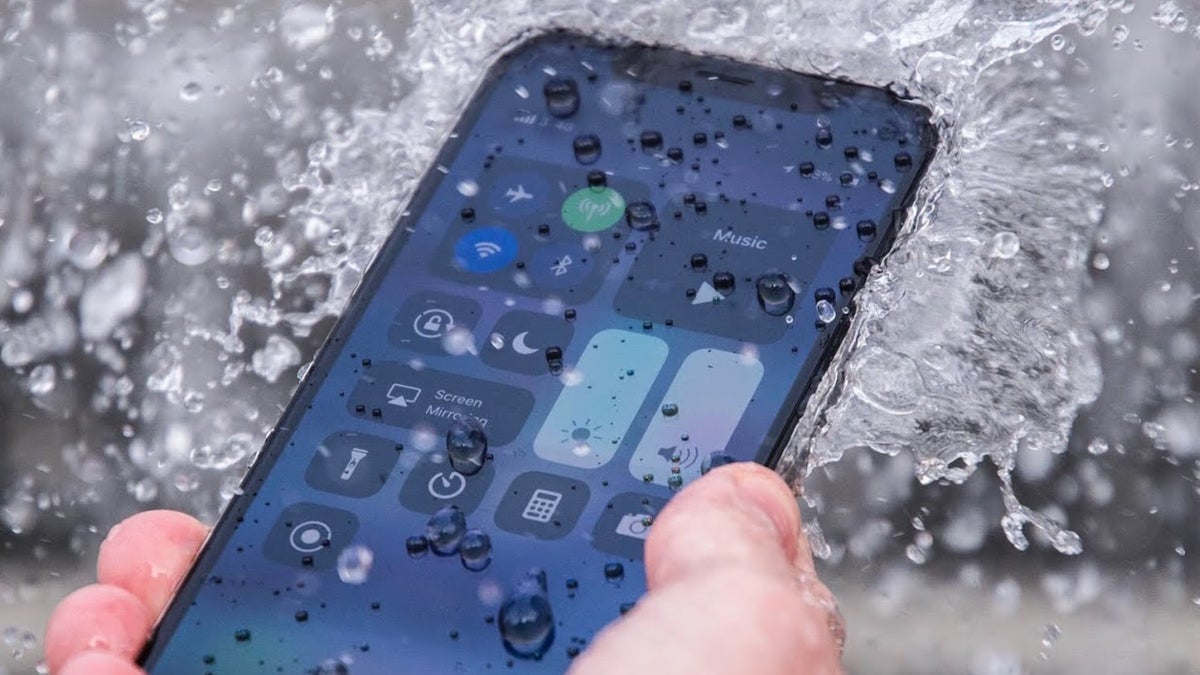The dreaded plunge – your phone takes an unwanted swim in a toilet, pool, or even a simple rain shower. For T-Mobile users facing water damage, panic can quickly set in. Fear not, this comprehensive guide equips you with the knowledge and steps to potentially salvage your device and navigate your T-Mobile options.
Understanding Water Damage: The Enemy Within
Water, while seemingly harmless, wreaks havoc on delicate electronic components within your phone. Corrosion, short circuits, and malfunctioning parts are all potential consequences of water exposure. The severity of damage depends on several factors:
- Type of liquid: Saltwater or chlorinated pool water are more conductive and damaging than freshwater.
- Length of exposure: The longer your phone is submerged, the greater the risk.
- Freshwater vs. Saltwater:
- Freshwater:Immediate action can sometimes mitigate damage.
- Saltwater:The corrosive nature of saltwater significantly increases repair difficulty.

Taking Immediate Action: The Race Against Time
Every second counts when your phone encounters water. Here’s what to do as soon as possible:
- Power Down:Instantly shut down your phone to prevent electrical shorts. Don’t press any buttons, as this can push water further inside.
- Remove the Case:Take off any cases or screen protectors to allow proper drying.
- Eject Everything:Remove the SIM card, SD card, and any other accessories.
- Dry Thoroughly:Use a clean, lint-free cloth to absorb as much visible moisture as possible. Do not use a hairdryer or place the phone near heat sources, as this can worsen damage.
Resist the Urge to Charge: While the temptation to see if your phone still works might be strong, resist the urge to charge it. Charging a wet phone is a recipe for disaster, potentially leading to permanent damage or even fire.
Advanced Drying Techniques (Optional):
- Uncooked Rice:A classic (and somewhat controversial) method involves placing the phone in a bowl of uncooked rice for 24-48 hours. The rice absorbs moisture, but its effectiveness is debated.
- Silica Gel Packets:These moisture-absorbing packets, often found in packaging, can be more effective than rice. However, ensure they are completely dry before use.
Important Note: These techniques are not guaranteed fixes and may not work for heavily damaged phones.
Contacting T-Mobile: Exploring Your Options
Once you’ve taken initial steps to dry your phone, it’s time to explore your options with T-Mobile:
- T-Mobile Insurance (Protection 360): If you have T-Mobile’s Protection 360 plan, you might be eligible for a device repair or replacement due to water damage. Contact T-Mobile to understand your coverage details and file a claim.
- Benefits:Protection 360 typically covers accidental damage, including water damage, subject to a deductible.
- Drawbacks:There might be a deductible associated with the claim, and filing a claim could impact future insurance premiums.
- Manufacturer’s Warranty: While most manufacturer warranties don’t cover water damage, it’s worth checking your phone’s specific warranty terms. In rare cases, the manufacturer might offer a repair option.
- Out-of-Warranty Repair: Several phone repair shops specialize in water damage repairs. This option can be more affordable than replacing the phone entirely, but success rates vary.
Considering Replacement: Upgrading or Switching Carriers?
If your phone is beyond repair or you don’t have Protection 360, consider these options:
- Upgrade with T-Mobile:T-Mobile offers upgrade programs that allow you to get a new phone at a discounted price.
- Bring Your Own Device (BYOD):If you’re open to switching carriers, explore BYOD options with other providers. You might find a good deal on a new phone without being locked into a T-Mobile contract.
- Purchasing a Used Phone:Consider purchasing a refurbished or used phone as a more budget-friendly option.
Important Note: When opting for a replacement, ensure the new phone is compatible with T-Mobile’s network.
Lessons Learned: Preventing Future Disasters
While accidents happen, here are some preventive measures to minimize the risk of water damage:
- Invest in a Waterproof Case:A waterproof case adds an extra layer of protection against splashes and spills. Choose a reputable brand that offers a certified waterproof rating.
- Be Mindful Around Water:Avoid using your phone near pools, beaches, or bathtubs. Increased humidity can also pose a risk.
- Regular Backups:Regularly backing up your phone’s data ensures you don’t lose precious photos, contacts, and other information in case of water damage or other unforeseen circumstances. T-Mobile offers cloud storage solutions or you can utilize other backup services.
Conclusion: Taking Charge After Water Damage
Encountering water damage with your T-Mobile phone can be stressful, but armed with the right knowledge and quick action, you can increase your chances of salvaging your device. By understanding the different options T-Mobile offers and considering preventative measures, you can navigate this situation effectively and ensure your mobile life stays afloat.
Disclaimer: This guide is intended for informational purposes only. T-Mobile policies and coverage details are subject to change. Always refer to the official T-Mobile website (https://account.t-mobile.com/signin/v2/) or contact customer service for the most up-to-date information regarding water damage and your specific plan.
Additional Resources:
- T-Mobile Support for Damaged Devices: https://mobileservicescenter.com/does-tmobile-cover-water-damage/(This link might need to be updated based on T-Mobile’s latest information)
- Tips on Drying Out a Wet Phone (from a reputable source): https://www.cnet.com/tech/mobile/wet-iphone-or-android-device-try-these-methods-to-dry-it-out/
By combining the information in this guide with these additional resources, you’ll be well-equipped to handle a water-damaged phone situation with your T-Mobile service.
لا تعليق